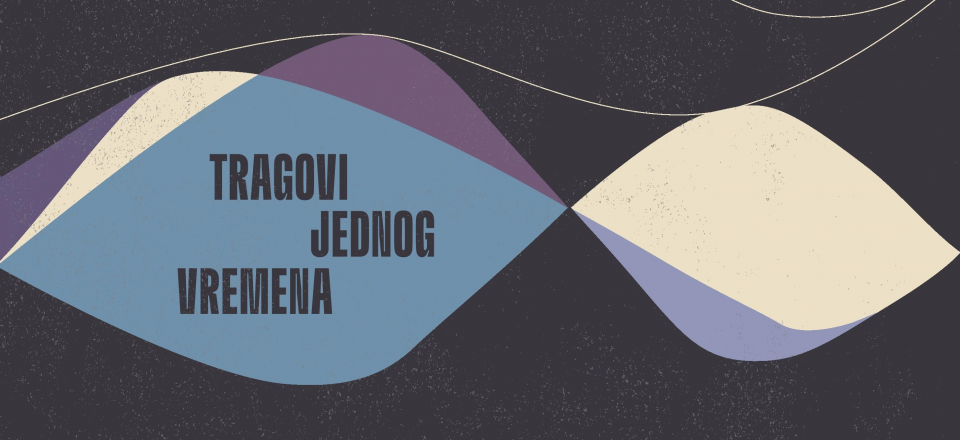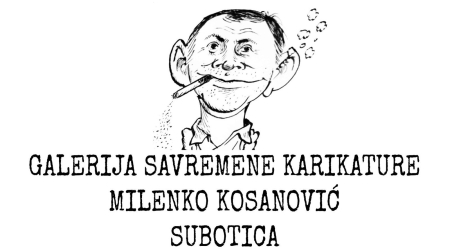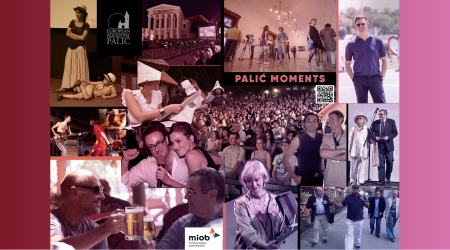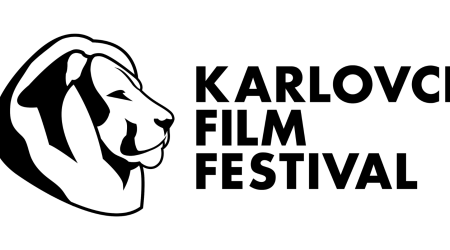Media kit
Back to...Traces of a Time Opening: Open University Gallery, Sunday 18th July, 4.30PM

The first film poster, by Marcellin Auzolle, printed for the promotion of the Lumière brothers' L'Arroseur Arrosé (1895), undoubtedly owes much to the lithographs of Toulouse-Lautrec, a kind of minimalism and bravura use of typography, that at the same time created a sense of atmosphere and directed the observer's attention to the most important moments. On the poster for the Limier brothers' film, which lasts only 45 seconds, in the foreground is the audience laughing while one of the comic scenes (slapstick) with the gardener can be seen in the background.
The main purpose of the film poster is to announce a new film that will appear in cinemas and inform the audience about the date of the premiere, the title and the protagonists of the film. The visual solutions of the film poster try to suggest a certain genre as well as the narrative that the film follows. In addition, with the appearance of the first film posters, designers have tackled what is called the "economy of attention" from the seventies until the modern development of various digital platforms. Summarizing some of the most important moments of the film in one type of collage / montage, the posters primarily sought to attract the potential viewers’ attention. With the first film posters, the "grammar" of the new attention literacy of modern viewers was formed. For film studios, from Hollywood to Bombay, attention quickly became capital, and movie posters were a symptom of the spread of its power among the masses. With the development of technical reproduction, especially film and later television, it became clear that attention is a limited resource for which different media have to fight. Until the 1980s, film posters were dominated by illustrations.
Posters of Yugoslav film from the 1950s, despite the prevailing political ideology, largely follow the emergence of basic "attention economy" patterns coming from the West, and sometimes achieve astonishing effects. Thus, the poster for Slavica directed by Vjekoslav Afrić, in addition to a photograph of a scene from the film, states that this is the first domestic feature film and lists all important information, from the main roles, cameramen, music, to production and distribution. Posters dominated by drawing virtuosity or a minimalist approach often achieved extraordinary effects precisely because they put graphic solutions in the foreground. Many posters were made in two versions, where one uses a completely reduced graphic solution, and the other is dominated by photographs of either the actors or some of the selected scenes from the film.
Some solutions attract attention with their radical lack of information, where, in addition to the very title of the film, sometimes only appears the production company or the director. It is also often emphasized that it is a domestic art film, which obviously highlighted the difference in relation to foreign, or various documentary propaganda films of that time. In contrast to such an approach, posters with based exclusively on photography are often more or less typified and in most cases are reduced to the photography of a scene from the film and basic data. By this approach, poster for Feather Gatherers (1967) by Aleksandar Petrović stands out, focusing viewer's attention on the figure of an old Roma woman smoking a pipe, suggesting that behind that face lies a phantasmagoric story about the unusual culture of urban nomads. Finally, there are posters that more or less successfully follow the Hollywood pattern trying to capture something of an atmosphere of the film and suggest genre affiliation. That is the case with the Soja Jovanović comedies: Suspicious Face, Pop Ćira and Pop Spira.
For all those who grew up with movies, posters were a kind of signpost through their youth, deeply engraved in their memory. It is not surprising that collectors of old movie posters are ready to set aside serious sums of money for some of the most attractive ones. Movie posters are a part of youth, irreplaceable topos of growing up, which have formed entire generations in the growing media chaos. With the advent of new distribution channels, first VHS, DVD, then, networks and various platforms like Netflix, it seems that the movie poster has not lost its importance, on the contrary, in the digital environment it has only become more adaptable. Even in the case when photography dominates with various digital interventions, the film poster retains its own logic of "attention economy", trying to remain recognizable. In the general inflation of images, when numerous algorithms offer users new content that is closest to their interests, there is no longer any doubt that attention is a limited resource, so there is more and more talk about the "attention ecology". That is why film posters, from the time when the film changed the sensibility of entire generations, have an increasing emotional and cultural value, outlining the patterns of attention literacy as a constitutive moment of the "new sensibility".
Jovan Čekić
Back to...-

SEVEN CARICATURES FOR THE SEVENTH ART
-

BATA IN 90 PICTURES
-

Palić Moments
The exhibition Palić Moments is not only an exhibition dedicated to one festival and its thirty-year long history, but represents a journey through the history of European and Serbian cinema.
-

Presentation of the Karlovci Film Festival
Karlovci Film Festival is a film festival that takes place every year, starting in 2018, in Sremski Karlovci. After more than twenty years without a cinema hall, a group of young people, mostly students of the Academy of Arts in Novi Sad, is organizing the first festival of its kind in Karlovci with about 1,500 visitors and a repertoire spread over three days.











